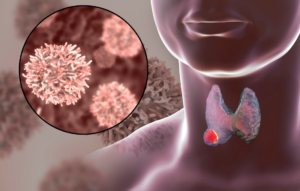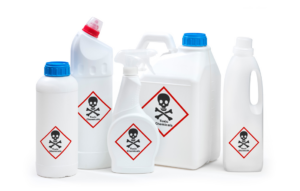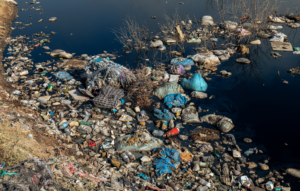In our daily lives, we are surrounded by countless chemicals, many of which we’ve come to depend on in our modern lives. Some are useful and harmless, but some of these substances pose significant risks to our health and the environment. Among the most concerning are “forever chemicals” a group of persistent compounds that resist degradation and remain in the environment for an unusually long time. Among these, BPA (Bisphenol A) and PFAS (Per- and Polyfluoroalkyl Substances) are particularly notorious.
Forever chemicals have found their way into a wide range of products we use every day, from plastic containers and non-stick cookware to water-resistant fabrics and food packaging. While they offer convenience and durability, the hidden costs are steep. These chemicals have been linked to a host of health problems, including hormonal disruptions, immune system impairments, and increased risks of various cancers.
Understanding the dangers of BPA, PFAS, and other forever chemicals is crucial for protecting both our health and the planet. In this blog post, we’ll look into what these chemicals are, how they impact our well-being, and what steps you can take to minimize exposure and safeguard your health. Join us as we explore the invisible yet pervasive threats posed by forever chemicals and learn how to take action against them.
Understanding Forever Chemicals
Forever chemicals, scientifically known as persistent organic pollutants (POPs), are synthetic compounds that do not break down easily in the environment. This persistence means they can accumulate in water, soil, air, and even within living organisms over time. The two most widely recognized groups of these chemicals are BPA (Bisphenol A) and PFAS (Per- and Polyfluoroalkyl Substances), both of which are used extensively in consumer products.
BPA (Bisphenol A) is a chemical primarily used in the production of polycarbonate plastics and epoxy resins. These materials are found in a variety of everyday items, such as water bottles, food containers, and the lining of canned goods. Despite its widespread use, BPA has come under scrutiny due to its ability to mimic estrogen and other hormones, leading to potential health risks even at low levels of exposure.
PFAS (Per- and Polyfluoroalkyl Substances) represent a large family of chemicals used to impart water, grease, and stain resistance to various products. Items like non-stick cookware, waterproof clothing, and fast-food wrappers often contain PFAS. Known as “forever chemicals” due to their extraordinary resistance to breaking down, PFAS have been linked to serious health issues, including immune system disruption, increased cholesterol levels, and certain types of cancer.
These chemicals’ pervasive presence and the growing body of research highlighting their adverse health effects underscore the importance of being informed. In the following sections, we’ll dive deeper into the specific dangers posed by BPA and PFAS, explore other notable forever chemicals, and discuss actionable steps to reduce your exposure and protect your health.
The Dangers of BPA
So, as mentioned, Bisphenol A (BPA) is a synthetic compound used primarily in the production of polycarbonate plastics and epoxy resins. These materials are found in a lot of our everyday items, including water bottles, food containers, and the linings of canned foods. Despite its widespread use, BPA has been the subject of significant health concerns due to its ability to mimic estrogen and other hormones in the body.
Health Impacts of BPA Exposure
- Hormonal Disruptions:
- BPA is an endocrine disruptor, meaning it can interfere with the body’s hormonal systems. It mimics the structure and function of the hormone estrogen, binding to estrogen receptors and altering hormonal balance.
- This disruption can lead to a variety of health issues, including developmental problems, metabolic disorders, and reproductive health challenges.
- Reproductive Health Issues:
- Studies have linked BPA exposure to reduced fertility in both men and women. In women, BPA has been associated with polycystic ovary syndrome (PCOS) and other reproductive disorders.
- In men, BPA exposure can lead to decreased sperm quality and concentration, affecting fertility.
- Links to Cancer and Other Chronic Diseases:
- Research suggests that BPA exposure may increase the risk of certain cancers, including breast and prostate cancer. The hormone-like activity of BPA can promote the growth of hormone-sensitive cancer cells.
- BPA exposure has also been linked to other chronic conditions such as obesity, diabetes, and cardiovascular diseases. The compound’s impact on metabolic processes and insulin regulation is a growing concern among health professionals.

Sources of BPA Exposure
Understanding where BPA is commonly found can help you take steps to reduce your exposure:
- Plastic Containers and Bottles: BPA is often used in the production of polycarbonate plastics. Look for products labeled as BPA-free.
- Canned Foods and Beverages: BPA is used in the lining of many canned goods to prevent corrosion and contamination. Opt for fresh or frozen foods instead of canned.

- Thermal Paper Receipts: Strangely enough, BPA is found in the thermal paper used for receipts and is a major point of exposure for people. Minimize handling of receipts and wash your hands after touching them.
The Dangers of PFAS
Per- and polyfluoroalkyl substances (PFAS) are a large family of man-made chemicals that have been used in industry and consumer products worldwide since the 1950s. Known for their resistance to water, oil, and heat, PFAS have become integral to a variety of products, including non-stick cookware, stain-resistant fabrics, and firefighting foams. However, these same properties that make PFAS so useful also make them highly persistent in the environment and potentially hazardous to human health.

Health Impacts of PFAS Exposure
- Immune System Effects:
- PFAS exposure has been linked to adverse effects on the immune system, including reduced vaccine response in children. These chemicals can weaken the body’s ability to fight infections, making individuals more susceptible to illnesses.
- Increased Risk of Certain Cancers:
- Several studies have found associations between PFAS exposure and an increased risk of cancers such as kidney, liver, and testicular cancer. PFAS can promote the growth of cancer cells and interfere with normal cellular functions.
- Liver Damage and Thyroid Disease:
- PFAS can accumulate in the liver, leading to liver damage and altered liver function. These chemicals can also disrupt thyroid hormone production, potentially causing thyroid disease and affecting metabolic processes.
Sources of PFAS Exposure
PFAS are prevalent in many everyday products, making exposure widespread:
- Non-Stick Cookware: PFAS are used in the coating of non-stick pots and pans. Opt for alternatives such as stainless steel or cast iron cookware.
- Stain-Resistant Fabrics and Carpets: PFAS are often used to make fabrics and carpets resistant to stains. Look for PFAS-free products and avoid treatments that offer stain resistance.
- Food Packaging: PFAS are found in food packaging materials, such as microwave popcorn bags and fast-food wrappers. Minimize the use of such packaging and choose fresh, whole foods when possible.
- Contaminated Water Sources: PFAS can contaminate drinking water through industrial discharge and firefighting foam runoff. Use water filters certified to remove PFAS to reduce exposure from tap water.
Other Notable Forever Chemicals
Beyond BPA and PFAS, there are several other significant forever chemicals that pose risks to both human health and the environment. These chemicals share similar characteristics: they are highly persistent, accumulate over time, and can have severe health impacts.
Phthalates
- What They Are: Phthalates are a group of chemicals used to make plastics more flexible and harder to break. They are commonly found in products such as vinyl flooring, plastic packaging, personal care products, and medical devices.
- Health Impacts:
- Endocrine Disruption: Like BPA, phthalates can interfere with hormonal systems, potentially leading to developmental and reproductive issues.
- Respiratory Problems: Exposure to phthalates has been linked to increased asthma and allergy symptoms, especially in children.
- Metabolic Issues: Some studies suggest a link between phthalate exposure and obesity, insulin resistance, and other metabolic disorders.
Dioxins
- What They Are: Dioxins are a group of chemically related compounds that are persistent environmental pollutants. They are mainly byproducts of industrial processes and can be released during the burning of fossil fuels and waste.
- Health Impacts:
- Cancer Risk: Dioxins are classified as human carcinogens and can increase the risk of several types of cancer.
- Immune System Damage: Dioxins can weaken the immune system, making the body more susceptible to infections.
- Developmental Issues: Exposure to dioxins during pregnancy can affect fetal development, leading to birth defects and developmental delays.

Polybrominated Diphenyl Ethers (PBDEs)
- What They Are: PBDEs are a class of flame retardants used in a variety of consumer products, including electronics, furniture, and textiles. These chemicals can leach out over time and accumulate in the environment and human tissue.
- Health Impacts:
- Neurodevelopmental Problems: Exposure to PBDEs has been linked to learning and memory issues.
- Hormonal Disruptions: PBDEs can interfere with thyroid hormone levels, impacting growth and development.
- Reproductive Health Issues: Animal studies have shown that PBDEs can affect fertility and reproductive outcomes.
Environmental Impact of Forever Chemicals
Forever chemicals not only pose risks to human health but also have far-reaching effects on ecosystems and wildlife.
Persistence and Accumulation
- Environmental Persistence: Forever chemicals are resistant to degradation, meaning they persist in the environment for extended periods once released.

- Accumulation in Ecosystems: These chemicals accumulate in water bodies, soil, and sediments over time, posing long-term risks to aquatic life and organisms in terrestrial ecosystems.
- Bioaccumulation: Through the food chain, forever chemicals can biomagnify, resulting in higher concentrations in organisms at higher trophic levels.
Effects on Wildlife and Ecosystems
- Disruption of Endocrine Systems: Similar to their impacts on humans, forever chemicals can disrupt hormonal systems in wildlife, leading to reproductive and developmental abnormalities.

- Toxicity to Aquatic Organisms: Many forever chemicals are toxic to aquatic organisms, including fish, amphibians, and invertebrates, impairing their health and survival.
- Ecosystem Impacts: Contamination with forever chemicals can alter ecosystem functions and biodiversity, affecting food webs and ecosystem resilience.
Mitigating Environmental Impact
Regulation and policy play crucial roles in addressing the pervasive presence of forever chemicals. By strengthening regulations, governments can limit the production and use of these persistent pollutants, encouraging industries to adopt safer alternatives. Environmental monitoring initiatives are essential for tracking levels of forever chemicals in water, soil, and air, providing vital data to assess contamination levels and guide remediation efforts. Implementing effective clean-up and remediation strategies is equally vital to mitigate the long-term impacts on ecosystems and human health, restoring contaminated sites and safeguarding natural habitats for future generations.
What You Can Do
Addressing the threats posed by forever chemicals requires collective action at various levels, from individual choices to global policy initiatives. Here’s how you can contribute to reducing exposure and advocating for change:
Personal Actions
- Choose Safer Products: We effectively vote for the success or failure of products with our dollars. Opt for products labeled as BPA-free, PFAS-free, and free of other harmful chemicals. Look for alternatives such as stainless steel or glass containers instead of plastics.

- Minimize Use of Single-Use Plastics: Reduce consumption of single-use plastics that may contain BPA or other hazardous chemicals, such as plastic bags and disposable utensils.
- Filter Drinking Water: Use water filters certified to remove contaminants, including PFAS, from your drinking water. Consider using reusable water bottles made of safe materials.
- Read Labels: Be mindful of product labels and avoid items that contain phthalates, PBDEs, and other harmful substances in household products, cosmetics, and personal care items.
Community and Advocacy Efforts
- Support Legislation: Advocate for stronger regulations and policies to restrict the use and release of forever chemicals into the environment. Stay informed about local and national legislative efforts and support initiatives aimed at protecting public health and the environment.
- Educate Others: Share knowledge about the dangers of forever chemicals with friends, family, and community members. Encourage others to make informed choices and join collective efforts to reduce exposure and promote safer alternatives.
- Participate in Clean-Up Initiatives: Get involved in community clean-up events focused on removing pollutants from waterways, parks, and other public spaces. Support initiatives that aim to restore contaminated sites and mitigate environmental damage caused by these chemicals.

Global Advocacy
- Support International Agreements: Advocate for global agreements and treaties that address the production, use, and disposal of forever chemicals on a global scale. Support efforts to phase out these substances worldwide and promote sustainable alternatives.
- Collaborate with NGOs: Partner with environmental organizations and non-governmental organizations (NGOs) dedicated to environmental health and advocacy. Join campaigns and initiatives that focus on reducing the impact of forever chemicals and promoting a healthy environment for all.
By taking proactive steps at the personal, community, and global levels, we can collectively work towards reducing the risks associated with forever chemicals and creating a safer and healthier environment for current and future generations.
Closing Thoughts
The pervasive presence of forever chemicals like BPA, PFAS, and others presents significant challenges to both human health and environmental well-being. These persistent pollutants have been linked to a range of serious health impacts, from hormonal disruptions and reproductive disorders to increased risks of cancer and immune system impairments. Their resistance to degradation also means they accumulate in the natural environment, posing long-term risks to ecosystems and wildlife.
However, by understanding the sources and impacts of forever chemicals, we empower ourselves to take meaningful action. From choosing safer products and advocating for stronger regulations to participating in community clean-up efforts and supporting global initiatives, every individual can contribute to reducing exposure and promoting sustainable practices.
It is absolutely essential for governments, industries, and individuals to work collaboratively to phase out the use of forever chemicals and adopt safer alternatives. By prioritizing environmental health and taking proactive steps to mitigate contamination and restore affected ecosystems, we can create a healthier and more sustainable future for generations to come.
Together, let’s do our best to continue to raise awareness, support informed decision-making, and advocate for policies that prioritize human and environmental health. By working collectively, we can greatly reduce these risks posed by forever chemicals and build a safer, cleaner world for all of us.












